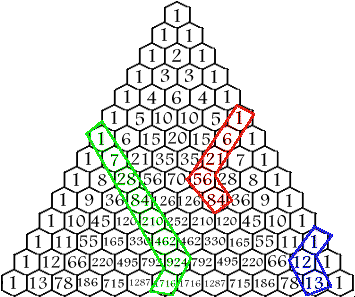(1) Performance Task 2
This constitutes the Elementary Mathematics component of Assessment.
The performance task focuses on the topic of Geometrical Proof - Circle Properties. (please refer to Blog entry on Mathematics Performance Task 2)
Deadline for submission is Term 4 Week 1 (first lesson)
(2) Paper 3
This constitutes the Additional Mathematics component of Assessment.
This will be conducted in Term 4.
Students are expected to familiarise themselves with GC-TI84+.
(please refer to your Math teacher on information on use of GC-TI84+)
(3) End-of-Year Examination: Mathematics
Information pertaining to the Maths exam has been communicated to the students in the GoogleSite (as well as the Maths blog).
Elementary Mathematics paper 1
Date: 27 September 2013 (Friday)
Duration: 1 hour 30 minutes
Elementary Mathematics paper 2
Date: 30 September 2013 (Monday)
Duration: 2 hours
Additional Mathematics
Date: 4 October 2013 (Friday)
Duration: 2 hours 30 minutes
Table of Specification
A. Elementary Mathematics
•
Numbers
and the four operations (moe 1.1)
•
Percentage
(moe 1.3)
•
Kinematics
/ speed (moe 1.4)
•
Algebraic
representation and formulae (moe 1.5)
•
Functions
and graphs (moe 1.7)
•
Algebraic
manipulation (moe 1.6)
•
Solutions
of equations and inequalities (moe 1.8)
•
Congruence
and similarity (moe 2.2)
•
Properties
of circles (moe 2.3)
•
Coordinate
geometry (moe 2.6)
•
Data
analysis (moe 3.2)
B. Additional Mathematics
(A1) Equations and inequalities
Conditions for a quadratic equation
Solving simultaneous equations in two variables with at least one linear
equation, by substitution
Relationships between the roots and coefficients of a quadratic equation
Solving quadratic inequalities, and representing the solution on the number line
(A2) Indices and surds
Four operations on indices and surds, including rationalising the denominator
Solving equations involving indices and surds
(A3) Polynomials and Partial Fractions
Multiplication and division of polynomials
Use of remainder and factor theorems
Factorisation of polynomials
Partial fractions
(A4) Binomial Expansions
(A5) Power, Exponential, Logarithmic, and Modulus functions
(G1) Trigonometric functions, identities and equations.
- · Six trigonometric functions for angles of any magnitude (in degrees or radians)
- · Principal values of sin–1x, cos–1x, tan–1x
- · Exact values of the trigonometric functions for special angles (30°,45°,60°) or (π/6, π/4, π/3)
- · Amplitude, periodicity and symmetries related to the sine and cosine functions
- · Graphs of y = asin(bx) , y = a sin(x/b + c), y = acos(bx) , y = a cos(x/b + c) and y = atan(bx) , where a is real, b is a positive integer and c is an integer.
- · Use of the following
- ∗ (BASIC TRIG RULES)
- sin A/cos A=tan A,
- cos A/sin A=cot A,
- sin2A+cos2A=1,
- sec2A=1+tan2A,
- cosec2A =1+cot2A
- (DOUBLE ANLES)
- the expansions of sin(A ± B), cos(A ± B) and tan(A ± B)
- the formulae for sin 2A, cos 2A and tan 2A
- (R-FORMULA) - the expression for acosu + bsinu in the form Rcos(u ± a) or R sin (u ± a)
- Simplification of trigonometric expressions
- · Solution of simple trigonometric equations in a given interval (excluding general solution)
- · Proofs of simple trigonometric identities
(G2) Coordinate Geometry
Condition for two lines to be parallel or perpendicular
(G2) Linear Law
Transformation of given relationships, including y = axn and y = kbx, to linear form to determine the unknown constants from a straight line graph
Resource and References
The following would be useful for revision:
- Maths Workbook
- Study notes
- Homework Handouts
- Exam Prep Booklets (that was given since the beginning of the year)
- Ace Learning Portal - where they could attempt practices that are auto-mark
- Past GCEO EM and AM questions (students were recommended to purchase these at the beginning of the year)
(4) General Consultation and Timed-trial during the school holidays
Duration: 0800 - 1030 (2 hours 30 minutes)




























